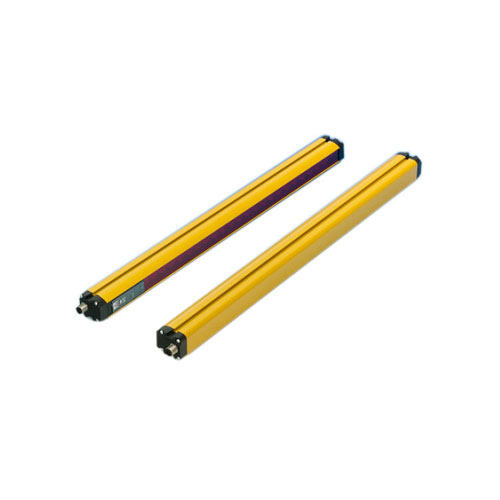
The purpose of a light curtain is to ensure that people are protected from dangerous machinery, which is a term that can be applied to any form of machinery or piece of equipment that is capable of moving in such a way that it could potentially harm or kill a human being. So what are light curtains, what do they do and how do they provide safety?
What is a light curtain?
A light curtain is a photoelectric style device that has similarities with an opposed beam photocell but which is arranged in a vertical array along with two or more beams within a variety of spacing configuration in order to create a “curtain”.
To put it simply, a light curtain makes use of the detection of a presence between a receiver and a transmitter, with the latter sending infrared light to the photoelectric cells of the former. When that input is no longer received by the cells they trigger that there is something in the way.
A light curtain’s main function is to be on all the time, looking for any potential interference of that infrared beam by anything, including a person. This would result in the creation of an output signal that is then normally fed into a safety relay device so that it provides redundant protection. Then the relay would signal to either turn off the machine or shut it down in order to avoid an accident.
After the tripping of the curtain and relay a lockout procedure will then take place to shut down the equipment concerned and for the machine to be reset in order to clear the emergency shutdown.
Applications of light curtains
Industrial facilities and manufacturers make use of light curtains as a safety measure in two main areas – the point of operation and the perimeter.
For guards at the point of operation, a light curtain is installed at the material handling site, for example underneath a hydraulic press, in order to make sure that no one can go into the danger area while the machine is in operation.
By contrast, perimeter guards delineate an entire working room or space, for instance for a robot arm. These guards are there to make certain that no object or individual can enter the boundary in which the machine will move.
Light curtains have certain advantages when compared to other varieties of safeguards like mechanical barriers, pull-back restraints or sliding gates. It is much easier to gain access to a machine that is being guarded by a light curtain than one with a physical barrier, and a light curtain also makes it simpler and more efficient to be able to perform routine maintenance as well as semi-automatic processes that need some human intervention.
Light curtains are an advanced method of ensuring that personnel are safe around hazardous machines. A light curtain provides flexibility, freedom and a reduction in operator fatigue while also simplifying routine tasks such as setting up, maintaining and repairing machines.
